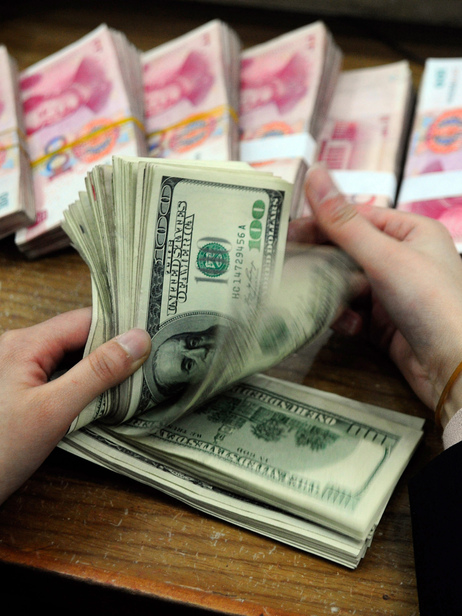Global economic activity continues to show varying paces of recovery across countries and economic sectors, as the impact of the COVID-19 pandemic continues to weigh on the outlook, according to the Central Bank of Egypt (CBE).
Prospects for global economic recovery remain contingent on the scale of distribution, as well as the efficacy of vaccines. Global economic and financial conditions are expected to remain accommodative and supportive of economic activity over the medium term, although global yield curves have steepened recently.
Meanwhile, international prices for oil, food, and other commodities have surged to post-pandemic highs, with the level of uncertainty increasing regarding their future price trajectories.
The surge in international oil prices was largely driven by supply side developments, while the increase in the prices of other commodities stemmed from both supply and demand side factors.
International food price forecasts relevant to Egypt’s consumption basket are expected to increase in 2021. This comes alongside upside risks mainly emanating from higher energy costs, according to the World Bank.
In addition, the outlook for Brent crude oil price incorporated in the domestic inflation outlook increased compared to the previous published Monetary Policy Report.
Domestically, cost-recovery for most fuel products has already been achieved. As a result, the pass-through of international oil prices to domestic inflation will be based on the quarterly review of the fuel prices as part of the price indexation mechanism.
This mechanism caps the price adjustments to domestic fuel prices to ±10% every quarter. Since the EGP 0.25/litre cut in select domestic fuel prices in April 2020, Egypt’s Fuel Automatic Pricing Committee decided to keep the announced fuel prices unchanged.
These decisions have led to achieving fiscal savings that were redirected by the government towards containing the novel coronavirus (COVID-19) pandemic and its repercussions on the Egyptian economy.
Egypt’s GDP growth is expected to lower in fiscal year (FY) 2020/21 than the previous fiscal year, reflecting the full year impact of the COVID-19 pandemic, and its related containment measures on the economy.
Given the gradual rollout of vaccines and the subsequent ease in uncertainty, a gradual recovery is expected starting from FY 2021/22. The magnitude and pace of that recovery will largely be a function of the pickup in tourism from the supply side, as well as private domestic demand.
Based on this pattern of recovery and anchored inflation expectations, in addition to projected real monetary conditions, annual headline inflation rates are expected to continue recording single digits.
It is expected that this rate will be affected by unfavourable base effects related to the normalisation of monthly inflation rates in 2021. However, it is anticipated that it will continue hovering around the inflation target’s mid-point of 7% in 2022.
Overall, risks to the above baseline inflation outlook are mainly balanced. Upside risks mainly stem from higher than projected pass through of international commodity prices to inflation.
Downside risks mainly stem from the lower than projected domestic food inflation rates in 2021 and 2022. It has also been affected by the COVID-19 pandemic and its repercussions, causing a prolonged high level of uncertainty to the global economic outlook.
The CBE’s Monetary Policy Committee (MPC) has decided to maintain its main policy rate unchanged in its meetings on 24 December 2020, and on 4 February 2021.
This follows its having cut key policy rates by a cumulative 400 bps in 2020, to support economic activity in light of the global and domestic developments stemming from the global health crisis.
In the meantime, and as it continues to support macroeconomic stability over the medium term, the CBE’s next inflation target has been set at 7% (±2%) on average during the fourth quarter (Q4) of 2022.
This is down from the 9% (±3%) on average during Q4 of 2020. Monetary policy tools are utilised to anchor inflation expectations, contain demand-side pressures, and second-round effects of supply shocks.
Exogenous factors that are outside the scope of monetary policy may lead to transitory deviations from previously announced target rates.
Global economic activity continued to be impacted by the COVID-19 pandemic, and the subsequent measures taken to curb its spread.
As a result, growth in Egypt’s external environment is expected to have continued to contract by 3.0% in Q4 of 2020, albeit at a softer pace compared to the negative 3.5% registered in the preceding quarter.
This marks the fourth consecutive quarter of negative global growth in Egypt’s external environment. However, growth is expected to slightly return to positive territory in Q1 of 2021.
Annual headline inflation of Egypt’s external environment decelerated to 0.9% in Q4 of 2020 from 1.3% in Q2 and Q3 of 2020. Inflation in advanced economies dropped to 0.1% in Q4 of 2020 from 0.3% in the previous two quarters.
The drop in inflation was driven by the deflation in the Euro area and Japan in Q4 of 2020, and by the deceleration in the UK’s headline inflation compared to Q3 of 2020. Combined, all of the latter offset the slight acceleration in inflation in the United States.
Similarly, inflation in emerging market economies fell to 2.9% in Q4 of 2020 relative to 3.5% in the preceding quarter. The latter came largely on the back of a deceleration in China and India’s inflation rates, which more than compensated for the acceleration in Russia and Brazil’s inflation figures.
Capital flows into emerging markets have continued to re-cover following the sharp slump in March 2020, which witnessed the sharpest outflows on record since 2008. The news regarding efficacy and distribution of vaccines and the accommodative global financial conditions have supported the resumption of inflows into emerging market economies.
Real GDP growth picked up slightly to 0.7% in Q3 of 2020 compared to a contraction of 1.7% in the previous quarter. It averaged 1.3% during the first three quarters of 2020, and against the 5.6% recorded in Q3 of 2019.
This comes as the negative impact of the COVID-19 pandemic continues to weigh on various economic sectors, which are yet to recover to their pre-pandemic growth rates.
Preliminary figures indicate that the contribution of consumption continued to cushion the economy in Q3 of 2020. This more than offset the negative contributions of gross domestic investments and net exports and extending its expansionary trend since Q2 of 2019.
Furthermore, the contribution of gross domestic investments improved compared to the previous quarter, albeit remaining in contractionary territory, registering negative 6.8% in Q3 of 2020. Meanwhile, that of net exports deteriorated further relative to the preceding quarter, contributing by negative 2.2% to overall GDP growth.
Meanwhile, yields on Egyptian Eurobonds have been broadly stable since January 2021. This followed their broad decline between May and December 2020, following the substantial increase witnessed in March and April 2020, in line with the unfavourable sentiment on emerging markets due to the COVID-19 pandemic.
Moreover, Egypt’s credit default swap (CDS) spreads remained relatively low compared to most of its peers with similar sovereign credit rating despite the recent increase. Furthermore, Fitch Ratings and Standard & Poor’s (S&P) have reaffirmed their current credit rating for Egypt while maintaining a ‘stable’ outlook in July 2020 and April 2020, respectively.
Egypt’s credit rating was upgraded by Moody’s and Fitch Ratings in April and March 2019, respectively, following the up-grade by S&P in May 2018.
In the banking sector, data until December 2020 continued to reflect partial transmission of the cumulative 400 bps policy rate cut on 16 March 2020, 24 September 2020, and 12 November 2020 to rates of new deposits.
Meanwhile, data for new lending rates reflected stronger transmission of the 400 bps policy rate cuts. New deposit rates declined to record 7.9% in December 2020, compared to an average of 9.5% recorded during December 2019, and January and February 2020.
The partial transmission was affected by the saving certificates at public banks. Meanwhile, rates of new loans declined to record 10.2% in December 2020, compared to an average of 15.1% during December 2019, January 2020 and February 2020, reflecting a transmission in the magnitude of 1.2x the cumulative 400 bps policy rate cut on 16 March 2020, 24 September 2020, and 12 November 2020. The decline was also supported by the CBE initiatives.



